Comments / Questions (33)
![]() Van De Velde Lisette wrote:
Van De Velde Lisette wrote:
Beste ik wil graag het breipatroon Cosy dames trui breien i, het garen symphony is niet meer verkrijgbaar . Ik heb gekozen voor het bouclé garen en kid Silk Lichtbeige en parelroze Maar ik krijg het niet verzonden . Heb ik de goede keuze gemaakt .? Kan u me helpen aub vriendelijke groeten
26.10.2025 - 19:48DROPS Design answered:
Dear Mrs Van De Velde Lisette, to get the same swatch you have to use 1 strand DROPS Alpaca Bouclé and 2 strands DROPS Kid Silk. Remember to make a swatch and make sure that it is the same like in the pattern. If necessary adjust needles size. You can order your yarn from one of shops listed HERE. Happy knitting!
05.11.2025 - 16:53
![]() Sabs wrote:
Sabs wrote:
Guten Tag, ich möchte gerne diesen Pullover stricken, aber die Wolle Symphony gibt es nicht mehr. durch was könnte ich die Wolle ersetzten? ich könnte mir vorstellen auch zwei ganz andere Garne zu nehmen. was können Sie mir vorschlagen? Vielen Dank für Ihre Antwort Sabs
21.10.2025 - 17:30DROPS Design answered:
Hi, Sabs, you can find useful links under the yarn information, "Garnalternativen", "Garngruppen A bis F" and "Ein anderes Garn verwenden". Happy knitting!
23.10.2025 - 09:11
![]() De Ryck wrote:
De Ryck wrote:
Beste, Graag had ik deze trui willen uitvoeren met naald 7 met maat 40. Kan u mij hiervan het patroon geven ?
21.04.2025 - 19:35
![]() Conny Stroo wrote:
Conny Stroo wrote:
Kunt u mij vertellen hoeveel wol ik nodig heb om deze trui te breien in Drops belle garen? Ik ben nieuw op jullie site kom er niet helemaal uit. Alvast bedankt
15.03.2025 - 09:18DROPS Design answered:
Dag Conny,
DROPS Belle valt in garencategorie B en het garen dat in dit patroon wordt gebruikt in garencategorie D. De stekenverhouding van Belle is dus heel anders. Idealiter zou je een garen uit dezelfde garengroep als vervanger hebben. Op deze pagina lees je alles over het vervangen van garens.
14.04.2025 - 06:56
![]() Noella wrote:
Noella wrote:
Bonjour, encore moi je viens de finir ma manche mes trop long et large je me demande comment pourrais-je faire car si je fais mes augmentations qui son au 5.5 cm 9 fois au lieu de 5.5 cm les augm. je devrais peut-être les faire a 2 cm a 44 ms, sauf que cela va devenir trop large du bas et feras pas joli, vous s'en penser quoi car mes raglans faut j'aie 38 ms, quand je vais diminuer, merci
05.09.2024 - 02:26DROPS Design answered:
Bonjour Noelle, vous pouvez ajuster la longueur souhaitée pour la manche en fonction de vos mesures souhaitées, aidez-vous du schéma des mesures si besoin. Bont ricot!
05.09.2024 - 09:10
![]() Hanny Wilbers wrote:
Hanny Wilbers wrote:
Leuk patroon, maar kan ik hem ook in pdf bewaren?
04.09.2024 - 11:51DROPS Design answered:
Dag Hanny,
Als je op 'Afdrukken' klikt, direct onder de materialenlijst, krijg je het afdrukscherm. In plaats van de printer kies je nu 'Opslaan als pdf'.
12.09.2024 - 20:51
![]() Noella wrote:
Noella wrote:
Oups, oublier de demander pour la manche on diminu 3 ms de chaque côté Et 14 fois 1m tous les 2 rgs =6ms, moi mon calcule arrive pas a 6 ms si juste un côté cela va faire bizarre le côté qu'on n'a enlever 3 ms, je suis tout mélanger avec la fin de la manche au Secours, désoler je suis dure a comprendre je suis très visuelle
04.09.2024 - 05:36DROPS Design answered:
Bonjour Noella, vous rabattez d'abord 3 m de chaque côté, puis vous diminuez pour le raglan tous les 4 rangs 1 ou 2 fois (cf taille): tricotez 3 rangs, diminuez 1 m de chaque côté au rang suivant sur l'endroit; puis vous diminuez pour le raglan 14 fois 1 m de chaque côté tous les 2 rangs (cf réponse précédente). Bon tricot!
04.09.2024 - 08:50
![]() Noella wrote:
Noella wrote:
Bonjour encore moi, Je suis rendu a la fin de la manche 14 fois 1m tous les 2 rgs=6 ms Si je comprend bien on diminu toujours du même côté 🤔 Merci
04.09.2024 - 04:46DROPS Design answered:
Bonjour Noella, vous devez diminuer 1 maille de chaque côté : 1 maille après les 2 premières mailles et 1 maille avant les 2 dernières mailles , tous les rangs sur l'endroit 14 fois au total (= il vous faudra 28 rangs + les premières diminutions 1 ou 2 fois tous le 4 rangs). Bon tricot!
04.09.2024 - 08:48
![]() Noella wrote:
Noella wrote:
Bonjour pour le dos petite question Quand nous arrivont pour l'encolure on enlève 10 ms. On enlève tu 1 m. Ts les 4 rgs coté encolure 2 fois ? Merci
01.09.2024 - 03:39DROPS Design answered:
Bonjour Noella, rappelez-vous de bien diminuer en même temps pour le raglan comme pour le devant, autrement dit, vous avez 46 m avant le raglan et diminuez 16 fois 1 m de chaque côté pour le raglan, et vous rabattez les 10 m centrales, il reste 4 mailles soit 2 mailles de chaque côté. Bon tricot!
02.09.2024 - 08:34
![]() Noella wrote:
Noella wrote:
A 31 cm, diminution de chaque côté de 3 mailles à l'endroit Mes rendu à la fin, je le fais comment ou je diminue sur l'envers Quand je tourne le travail, Merci
13.08.2024 - 17:03DROPS Design answered:
Bonjour Noella, à 31 cm de hauteur totale, vous formez les emmanchures en 1ère et 2ème taille, autrement dit vous allez rabattre 3 mailles au début des 2 rangs suivants (3 mailles en début de rang sur l'endroit et 3 mailles au début du rang suivant sur l'envers), vous avez ainsi rabattu 3 mailles de chaque côté. Bon tricot!
14.08.2024 - 07:27
Cosy |
|
|
|
|
DROPS Pullover in "Symphony" and "Kid-Silk".
DROPS 68-5 |
|
|
Gauge: 10 sts x 17 rows with 1 strand Symphony + 1 strand Kid-Silk = 10 x 10 cm [4" x 4"] on larger needles in stockinette st. Rib: * K 2, P 2 *, repeat from * - *. Garter st, when knitting flat: Knit all sts, on all rows. Knitting tips: All decs are made on right side rows. Dec 1 st for raglan inside 2 sts as follows: Dec after 2 edge sts: K 2 tog. Dec before 2 edge sts: sl 1, K 1, psso. --------------------------------------------- Front: Cast on 46-50-54-58 sts on smaller needles with 1 strand Symphony and 2 strands Kid-Silk (3 strands of yarn). Change to 1 strand Symphony and 1 strand Kid-Silk (2 strands of yarn) and work 4 rows rib, keeping 1 st at each edge in garter st. Change to larger needles and work stockinette st over all sts. When the piece measures 8 cm [3⅛"] inc 1 st at each side every 6-7-11-12 cm [2⅜"-2.75"-4.25"-4.75"] a total of 3-3-2-2 times = 52-56-58-62 sts. When the piece measures 31-31-33-34 cm [12.25"-12.25"-13"-13⅜"] bind off 3-3-3-4 sts at each side = 46-50-52-54 sts. Now shape raglan - see knitting tips: dec 1 st at each side every other row a total of 16-18-18-19 times. At the same time when the piece measures 44-45-47-48 cm [17.25"-17.75"-18.5"-18⅞"] bind off the center 6-6-6-6 sts for the neck and work each shoulder separate. Continue to dec 1 st at each neck edge every 4 rows 2-2-3-3 times. After all neck and raglan shaping is complete 2 sts remain at each side of neck, bind off. The piece measures approx. 50-52-54-56 cm [19.75"-20.5"-21.25"-22"]. Back: Cast on and work the same as the front. Shape raglan as on front but bind off the center 10-10-12-12 sts for the neck when the piece measures 49-51-53-55 cm [19.25"-20"-20⅞"-21⅝"]= 2 sts remain at each side of neck, bind off. The piece measures approx. 50-52-54-56 cm [19.75"-20.5"-21.25"-22"]. Sleeve: Cast on 26-26-26-30 sts on smaller needles with 1 strand Symphony and 2 strands Kid-Silk (3 strands of yarn). Change to 1 strand Symphony and 1 strand Kid-Silk (2 strands of yarn) and work 4 rows rib, keeping 1 st at each edge in garter st. Change to larger needles and stockinette st. When the piece measures 6-6-7-8 cm [2⅜"-2⅜"-2.75"-3⅛"] inc 1 st at each side every 5.5-5-4.5-5 cm [2⅛"-2"-1.75"-2"] a total of 8-9-9-8 times = 42-44-44-46 sts. When sleeves measures 50-49-49-49 cm [19.75"-19.25"-19.25"-19.25"] bind off 3 sts at each side = 36-38-38-40 sts. Then shape raglan at each side - see knitting tips: dec 1 st at each side every 4 rows a total of 1-2-2-2 times and then 1 st every other row a total of 14-14-14-15 times = 6 sts remain. Bind off, the piece measures approx. 69-70-70-71 cm [27⅛"-27⅝"-27⅝"-28"]. Assembly: Sew all seams using edge sts as seam allowance. Sew 3 of the raglan seams. Pick up approx. 40 to 48 sts around the neck on smaller needles with 1 strand Symphony and 1 strand Kid-Silk (2 strands of yarn). Work 4 rows stockinette st, bind off loosely. Sew the last raglan seam and neckband. Sew sleeve and side seams. |
|
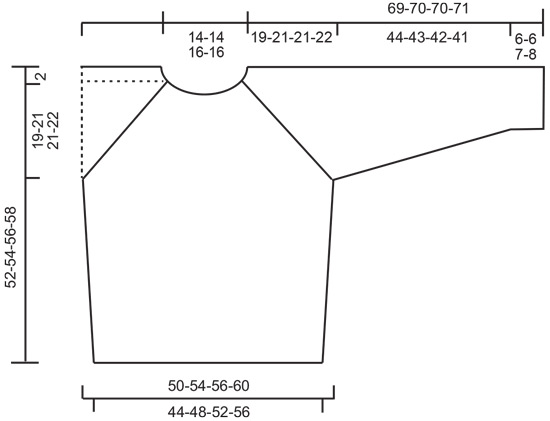 |
|
Have you finished this pattern?Tag your pictures with #dropspattern or submit them to the #dropsfan gallery. Do you need help with this pattern?You'll find 19 tutorial videos, a Comments/Questions area and more by visiting the pattern on garnstudio.com. © 1982-2025 DROPS Design A/S. We reserve all rights. This document, including all its sub-sections, has copyrights. Read more about what you can do with our patterns at the bottom of each pattern on our site. |










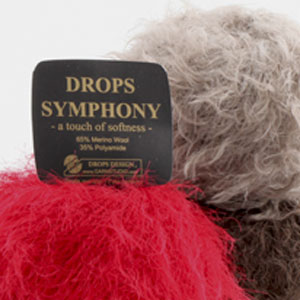

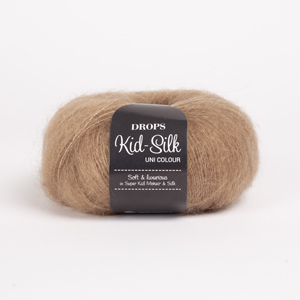
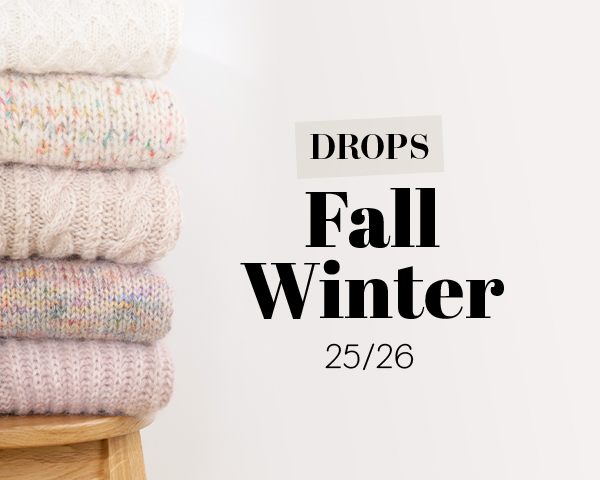



















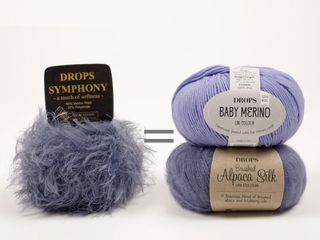
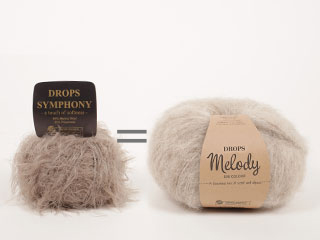











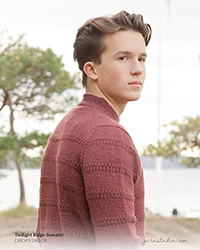
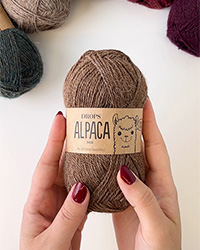
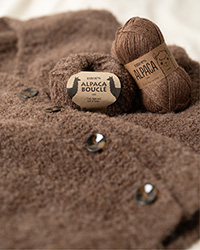
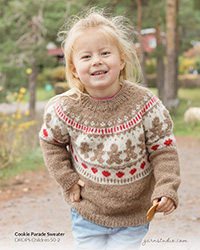
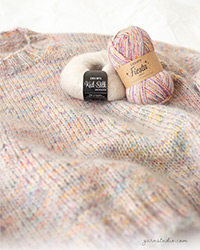
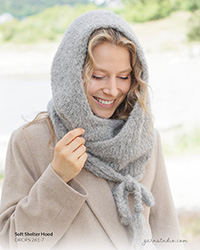
Post a comment to pattern DROPS 68-5
We would love to hear what you have to say about this pattern!
If you want to leave a question, please make sure you select the correct category in the form below, to speed up the answering process. Required fields are marked *.